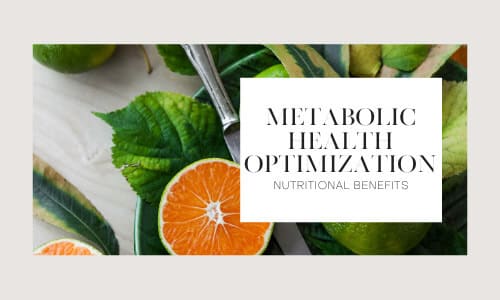The thyroid is a butterfly-shaped gland in the lower front of the neck. It produces thyroid hormones (T3 and T4) that impact body temperature, heart rate, and metabolism. It helps cells turn food into energy. Every cell in the body uses thyroid hormone! When the thyroid gland functions properly and produces the right amount of thyroid hormones, it is called euthyroid. However, more than 12 percent of the US population will have thyroid disease sometime in their lives (1). Women are 5-8 times more likely than men to have thyroid problems. Given its influence on health, it’s imperative to understand when it’s not functioning optimally and what to do about it.
Thyroid dysfunction can result in the following:
Hypothyroid: an underactive thyroid where the thyroid gland doesn’t produce enough thyroid hormones.
Hashimoto’s disease: an autoimmune disease where the body starts attacking the thyroid gland, ultimately resulting in low thyroid hormone production. It is the most common cause of hypothyroidism (2). Inflammation of the thyroid gland can initially lead to higher thyroid hormones spilling out in the bloodstream, but as time goes on, thyroid production will decrease.
Subclinical hypothyroidism: normal thyroid hormones (T4 & T3) in the bloodstream but elevated thyroid-stimulating hormone (TSH) levels are detected (3). High TSH levels indicate an underactive thyroid.
Hyperthyroid: an overactive thyroid where too much thyroid hormone is produced.
Grave’s disease: an autoimmune disease and the leading cause for hyperthyroidism (4). The immune system creates antibodies that bind to thyroid receptors, causing them to overproduce thyroid hormones.
Symptoms
How do you know if you are producing too much or too little thyroid hormones? An excellent place to start is by checking for these symptoms:
Hypothyroidism:
- Fatigue
- Depression
- Heavy periods
- Weight gain
- Constipation
- Irregular periods
- Dry skin
- Constipation
- Hair loss
- Feeling cold
- Infertility

Metabolic Optimization Package
In-depth nutritional testing, thyroid testing, and review consult with Dr. Guan (Value $1300)
Personalized Supplement Recommendations ($150)
Four nutritional consultations with a functional nutritionist ($300)
Total value over $1750 for ($1550)
To apply complete the form below
Citations
1. American Thyroid Association. (2021). General Information/Press Room. Retrieved from: https://www.thyroid.org/media-main/press-room/#:~:text=An%20estimated%2020%20million%20Americans,thyroid%20disorder%20during%20her%20lifetime.
2. Garber, J. R., Cobin, R. H., Gharib, H., Hennessey, J. V., Klein, I., Mechanick, J. I., … Woeber, K. A. (2012). Clinical practice guidelines for hypothyroidism in adults: Cosponsored by the american association of clinical endocrinologists and the American thyroid association. Endocrine Practice, 18(6), 988–1028. https://doi.org/10.4158/ep12280.gl
3. Biondi, B., Cappola, A. R., & Cooper, D. S. (2019). Subclinical Hypothyroidism: A Review. JAMA – Journal of the American Medical Association, 322(2), 153–160. https://doi.org/10.1001/jama.2019.9052
4. NHS. (2019). Causes Overactive Thyroid. Retrieved from: https://www.nhs.uk/conditions/overactive-thyroid-hyperthyroidism/causes/
5. Koyyada, A., & Orsu, P. (2020). Role of hypothyroidism and associated pathways in pregnancy and infertility: Clinical insights. Tzu Chi Medical Journal, 32(4), 312–317. https://doi.org/10.4103/tcmj.tcmj_255_19
6. Kim, S. W., Lee, J. H., Shon, H. S., Jeon, E., & Kim, T. Y. (2021). Association of breastfeeding with thyroid function and autoimmunity in postmenopausal women. Endocrine, 71(1), 130–138. https://doi.org/10.1007/s12020-020-02385-3
7. Singh, J., Wong, H., Ahluwalia, N., Go, R. M., & Guerrero-Go, M. A. (2020). Metabolic, Hormonal, Immunologic, and Genetic Factors Associated With the Incidence of Thyroid Disorders in Polycystic Ovarian Syndrome Patients. Cureus, 12(11). https://doi.org/10.7759/cureus.11681
8. Benvenga, S., Elia, G., Ragusa, F., Paparo, S. R., Sturniolo, M. M., Ferrari, S. M., … Fallahi, P. (2020). Endocrine disruptors and thyroid autoimmunity. Best Practice and Research: Clinical Endocrinology and Metabolism, 34(1), 101377. https://doi.org/10.1016/j.beem.2020.101377
9. Hernández, A. F., Bennekou, S. H., Hart, A., Mohimont, L., & Wolterink, G. (2020). Mechanisms underlying disruptive effects of pesticides on the thyroid function. Current Opinion in Toxicology, 19(Table 1), 34–41. https://doi.org/10.1016/j.cotox.2019.10.003
10. Lisco, G., Tullio, A., Giagulli, V., Pergola, G., & Triggiani, V. (2020). Interference on Iodine Uptake and Human Thyroid Function by Perchlorate-Contaminated Water and Food. Nutrients, 12(6), 1669. Doi:10.3390/nu12061669
11. Vieira, I., Rodrigues, D., & Paiva, I. (2020). Vitamin D and Autoimmune Thyroid Diseases – a Review. Nutrients, 12(9), 2791. https://doi.org/10.3390/nu12092791
12. Hubalewska-Dydejczyk, A., Duntas, L., & Gilis-Januszewska, A. (2020). Pregnancy, thyroid, and the potential use of selenium. Hormones, 19(1), 47–53. https://doi.org/10.1007/s42000-019-00144-2
13. Mahan, K., Raymond, J. (2017). Krause’s Food and the Nutrition Care Process 14th edition. Elsevier Publishing.
14. Benvenga, S., Feldt-Rasmussen, U., Bonofiglio, D., & Asamoah, E. (2019). Nutraceutical supplements in the thyroid setting: Health benefits beyond basic nutrition. Nutrients, 11(9), 1–19. https://doi.org/10.3390/nu11092214
15. Stansbury, J., Saunders, P., & Winston, D. (2013). Promoting Healthy Thyroid Function with Iodine, Bladderwrack, Guggul and Iris. Journal of Restorative Medicine, 1(1), 83–90. https://doi.org/10.14200/jrm.2012.1.1008
16. Friedman, M. (2013). Thyroid Autoimmune Disease. Journal of Restorative Medicine, 2(1), 70–81. https://doi.org/10.14200/jrm.2013.2.0112
17. Yarnell, E., & Abascal, K. (2006). Botanical medicine for thyroid regulation. Alternative and Complementary Therapies, 12(3), 107–112. https://doi.org/10.1089/act.2006.12.107
18. Shokri, Z., Khoshbin, M., Koohpayeh, A., Abbasi, N., Bahmani, F., Rafieian-Kopaei, M., & Beyranvand, F. (2018). Thyroid diseases: Pathophysiology and new hopes in treatment with medicinal plants and natural antioxidants. International Journal of Green Pharmacy, 12(3), S473–S482.




